For the house lover and the curious tourist, for the house buyer and the weekend stroller, for neighborhood preservation groups and for all who want to know more about their community -- here, at last, is a book that makes it both easy and pleasurable to identify the various styles and periods of American domestic architecture.
Concentrating not on rare landmarks but on typical dwellings in ordinary neighborhoods all across the United States -- houses built over the past three hundred years and lived in by Americans of every social and economic background -- the book provides you with the facts (and frame of reference) that will enable you to look in a fresh way at the houses you constantly see around you. It tells you -- and shows you in more than 1,200 illustrations -- what you need to know in order to be able to recognize the several distinct architectural styles and to understand their historical significance. What does that cornice mean? Or that porch? That door? When was this house built? What does its style say about the people who built it? You'll find the answers to such questions here.
This is how the book works: Each of thirty-nine chapters focuses on a particular style (and its variants). Each begins with a large schematic drawing that highlights the style's most important identifying features. Additional drawings and photographs depict the most common shapes and the principal subtypes, allowing you to see at a glance a wide range of examples of each style. Still more drawings offer close-up views of typical small details -- windows, doors, cornices, etc. -- that might be difficult to see in full-house pictures. The accompanying text is rich in information about each style -- describing in detail its identifying features, telling you where (and in what quantity) you're likely to find examples of it, discussing all of its notable variants, and revealing its origin and tracing its history.
In the book's introductory chapters you'll find invaluable general discussions of house-building materials and techniques ("Structure"), house shapes ("Form"), and the many traditions of architectural fashion ("Style") that have influenced American house design through the past three centuries. A pictorial key and glossary help lead you from simple, easily recognized architectural features -- the presence of a tile roof, for example -- to the styles in which that feature is likely to be found.
Concentrating not on rare landmarks but on typical dwellings in ordinary neighborhoods all across the United States -- houses built over the past three hundred years and lived in by Americans of every social and economic background -- the book provides you with the facts (and frame of reference) that will enable you to look in a fresh way at the houses you constantly see around you. It tells you -- and shows you in more than 1,200 illustrations -- what you need to know in order to be able to recognize the several distinct architectural styles and to understand their historical significance. What does that cornice mean? Or that porch? That door? When was this house built? What does its style say about the people who built it? You'll find the answers to such questions here.
This is how the book works: Each of thirty-nine chapters focuses on a particular style (and its variants). Each begins with a large schematic drawing that highlights the style's most important identifying features. Additional drawings and photographs depict the most common shapes and the principal subtypes, allowing you to see at a glance a wide range of examples of each style. Still more drawings offer close-up views of typical small details -- windows, doors, cornices, etc. -- that might be difficult to see in full-house pictures. The accompanying text is rich in information about each style -- describing in detail its identifying features, telling you where (and in what quantity) you're likely to find examples of it, discussing all of its notable variants, and revealing its origin and tracing its history.
In the book's introductory chapters you'll find invaluable general discussions of house-building materials and techniques ("Structure"), house shapes ("Form"), and the many traditions of architectural fashion ("Style") that have influenced American house design through the past three centuries. A pictorial key and glossary help lead you from simple, easily recognized architectural features -- the presence of a tile roof, for example -- to the styles in which that feature is likely to be found.
Major George Eyster V comes from a long line of military officers, dating back to the Revolutionary War. Army service was George's family legacy, but his tour of duty in Iraq left him disillusioned and questioning. He was making plans to end his army career but was offered a posting to J-PAC, an elite division armed with the latest detection and forensic technology. J-PAC's sole mission is to fulfill a solemn promise at the heart of the military code: bring all fallen soldiers home to the country for which they gave their lives.
In 1944 Captain Ryan McCown, a dashing young Marine aviator assigned to the USS Nassau, was shot down over the jungles of Papua, New Guinea. McCown's diaries and letters home to his family and fiancée provide a moving, powerful portrait of the fears and costs of a very different war and underscore the pathos of the ultimate cost of duty.
Eyster's mission with J-PAC eventually took him and his team deep into the sweltering interior of New Guinea in search of McCown's remains. It would be a fraught mission, complete with tropical diseases and black magic, at the end of which Eyster would not only repatriate a fallen veteran and fulfill a promise to deliver him to his loved ones but would also uncover something lost in himself-a sense of purpose in a promise between soldiers that is still worth fighting for.
National Geographic's new inspirational book combines meaningful, calming quotations and affirmations with powerful photography--the perfect source for relaxation and meditation. Each page of this elegant guide soothes as it inspires with quotations and images centered on monthly themes: a graceful pathway to a more mindful, beautiful life.
From the inimitable and bestselling author Thomas Cahill, another popular history, focusing on the Renaissance and Reformation and how this innovative period changed the Western world.
In Volume VI of his acclaimed Hinges of History series, Thomas Cahill guides us through the thrilling period of Renaissance and Reformation (late fourteenth to early seventeenth centuries), so full of innovation and cultural change that the Western world would not experience its like again until the twentieth century. Beginning with the continent-wide disaster of the Black Plague, Cahill traces the many innovations in European thought and experience that served both the new humanism of the Renaissance and the seemingly abrupt religious alterations of the increasingly radical Reformation. This is an age of the most sublime artistic and scientific adventure, but also of newly powerful princes and armies, and of newly found courage, as many thousands refuse to bow their heads to the religious pieties of the past. It is an era of newly discovered continents and previously unknown peoples. More than anything, it is a time of individuality in which a whole culture must achieve a new balance, if the West is to continue.
From the bestselling and award-winning author of Paris 1919 comes a masterpiece of narrative nonfiction, a fascinating portrait of Europe from 1900 up to the outbreak of World War I.
The century since the end of the Napoleonic wars had been the most peaceful era Europe had known since the fall of the Roman Empire. In the first years of the twentieth century, Europe believed it was marching to a golden, happy, and prosperous future. But instead, complex personalities and rivalries, colonialism and ethnic nationalisms, and shifting alliances helped to bring about the failure of the long peace and the outbreak of a war that transformed Europe and the world.
The War That Ended Peace brings vividly to life the military leaders, politicians, diplomats, bankers, and the extended, interrelated family of crowned heads across Europe who failed to stop the descent into war: in Germany, the mercurial Kaiser Wilhelm II and the chief of the German general staff, Von Moltke the Younger; in Austria-Hungary, Emperor Franz Joseph, a man who tried, through sheer hard work, to stave off the coming chaos in his empire; in Russia, Tsar Nicholas II and his wife; in Britain, King Edward VII, Prime Minister Herbert Asquith, and British admiral Jacky Fisher, the fierce advocate of naval reform who entered into the arms race with Germany that pushed the continent toward confrontation on land and sea.
There are the would-be peacemakers as well, among them prophets of the horrors of future wars whose warnings went unheeded: Alfred Nobel, who donated his fortune to the cause of international understanding, and Bertha von Suttner, a writer and activist who was the first woman awarded Nobel’s new Peace Prize. Here too we meet the urbane and cosmopolitan Count Harry Kessler, who noticed many of the early signs that something was stirring in Europe; the young Winston Churchill, then First Lord of the Admiralty and a rising figure in British politics; Madame Caillaux, who shot a man who might have been a force for peace; and more. With indelible portraits, MacMillan shows how the fateful decisions of a few powerful people changed the course of history.
Taut, suspenseful, and impossible to put down, The War That Ended Peace is also a wise cautionary reminder of how wars happen in spite of the near-universal desire to keep the peace. Destined to become a classic in the tradition of Barbara Tuchman’s The Guns of August, The War That Ended Peace enriches our understanding of one of the defining periods and events of the twentieth century.
Lady Catherine, the Earl, and the Real Downton Abbey, a transporting companion piece to the New York Times bestseller Lady Almina and the Real Downton Abbey, tells the story of Catherine Wendell, the beautiful and spirited American woman who married Lady Almina’s son, the man who would become the 6th Earl of Carnarvon. The couple presided over Highclere Castle, the grand estate that serves as the central character for the hit PBS show Downton Abbey. Following the First World War, many of the great houses of England faded as their owners fortunes declined in the new political and social world of the 1920s and 1930s. As the nations of Europe inched towards war, Highclere’s survival as the family home of the Carnarvons was again in the balance.
Using copious materials—including diaries and scrapbooks—from the castle’s archives, the current Countess of Carnarvon brings alive a very modern story in a beautiful and fabled setting, paying particular attention to the staff who offer the Castle continuity between generations.
Tune In is the first volume of All These Years—a highly-anticipated, groundbreaking biographical trilogy by the world's leading Beatles historian. Mark Lewisohn uses his unprecedented archival access and hundreds of new interviews to construct the full story of the lives and work of John Lennon, Paul McCartney, George Harrison, and Ringo Starr.
Ten years in the making, Tune In takes the Beatles from before their childhoods through the final hour of 1962—when, with breakthrough success just days away, they stand on the cusp of a whole new kind of fame and celebrity. They’ve one hit record ("Love Me Do") behind them and the next ("Please Please Me") primed for release, their first album session is booked, and America is clear on the horizon. This is the lesser-known Beatles story—the pre-Fab years of Liverpool and Hamburg—and in many respects the most absorbing and incredible period of them all. Here is the complete and true account of their family lives, childhoods, teenage years and their infatuation with American music, here is the riveting narrative of their unforgettable days and nights in the Cavern Club, their laughs, larks and adventures when they could move about freely, before fame closed in.
For those who’ve never read a Beatles book before, this is the place to discover the young men behind the icons. For those who think they know John, Paul, George, and Ringo, it’s time to press the Reset button and tune into the real story, the lasting word.
Ten years in the making, Tune In takes the Beatles from before their childhoods through the final hour of 1962—when, with breakthrough success just days away, they stand on the cusp of a whole new kind of fame and celebrity. They’ve one hit record ("Love Me Do") behind them and the next ("Please Please Me") primed for release, their first album session is booked, and America is clear on the horizon. This is the lesser-known Beatles story—the pre-Fab years of Liverpool and Hamburg—and in many respects the most absorbing and incredible period of them all. Here is the complete and true account of their family lives, childhoods, teenage years and their infatuation with American music, here is the riveting narrative of their unforgettable days and nights in the Cavern Club, their laughs, larks and adventures when they could move about freely, before fame closed in.
For those who’ve never read a Beatles book before, this is the place to discover the young men behind the icons. For those who think they know John, Paul, George, and Ringo, it’s time to press the Reset button and tune into the real story, the lasting word.
Now in paperback!
Don’t miss the thrilling sneak peek of George R. R. Martin’s A Song of Ice and Fire: Book Six, The Winds of Winter.
A whopping big celebration of the work of the late, great Nora Ephron, America’s funniest—and most acute—writer, famous for her brilliant takes on life as we’ve been living it these last forty years.
Everything you could possibly want from Nora Ephron is here—from her writings on journalism, feminism, and being a woman (the notorious piece on being flat-chested, the clarion call of her commencement address at Wellesley) to her best-selling novel, Heartburn, written in the wake of her devastating divorce from Carl Bernstein; from her hilarious and touching screenplay for the movie When Harry Met Sally . . . (“I’ll have what she’s having”) to her recent play Lucky Guy (published here for the first time); from her ongoing love affair with food, recipes and all, to her extended takes on such controversial women as Lillian Hellman and Helen Gurley Brown; from her pithy blogs on politics to her moving meditations on aging (“I Feel Bad About My Neck”) and dying.
Her superb writing, her unforgettable movies, her honesty and fearlessness, her nonpareil humor have made Nora Ephron an icon for America’s women—and not a few of its men.
Everything you could possibly want from Nora Ephron is here—from her writings on journalism, feminism, and being a woman (the notorious piece on being flat-chested, the clarion call of her commencement address at Wellesley) to her best-selling novel, Heartburn, written in the wake of her devastating divorce from Carl Bernstein; from her hilarious and touching screenplay for the movie When Harry Met Sally . . . (“I’ll have what she’s having”) to her recent play Lucky Guy (published here for the first time); from her ongoing love affair with food, recipes and all, to her extended takes on such controversial women as Lillian Hellman and Helen Gurley Brown; from her pithy blogs on politics to her moving meditations on aging (“I Feel Bad About My Neck”) and dying.
Her superb writing, her unforgettable movies, her honesty and fearlessness, her nonpareil humor have made Nora Ephron an icon for America’s women—and not a few of its men.
From the authors of the New York Times bestsellers Awkward Family Photos and Awkward Family Pet Photos comes a celebration of those special times throughout the year when our families embarrass us the most . . . the holidays.
Holidays. They’re those momentous occasions when we gather with family to eat, drink, celebrate, and, of course, pose for photographs. From Mom’s homemade Halloween costumes to re-creating a Nativity scene for the Christmas card to that overly patriotic uncle who literally wears the flag on the Fourth, holidays make for humiliating memories that we carry in our hearts for years to come. Whether your family loves Valentine’s Day, St. Patrick’s Day, Easter, July Fourth, Halloween, Thanksgiving, Christmas, or Hanukkah, this book pays homage to all of the holidays’ most uncomfortable moments.
Holidays. They’re those momentous occasions when we gather with family to eat, drink, celebrate, and, of course, pose for photographs. From Mom’s homemade Halloween costumes to re-creating a Nativity scene for the Christmas card to that overly patriotic uncle who literally wears the flag on the Fourth, holidays make for humiliating memories that we carry in our hearts for years to come. Whether your family loves Valentine’s Day, St. Patrick’s Day, Easter, July Fourth, Halloween, Thanksgiving, Christmas, or Hanukkah, this book pays homage to all of the holidays’ most uncomfortable moments.

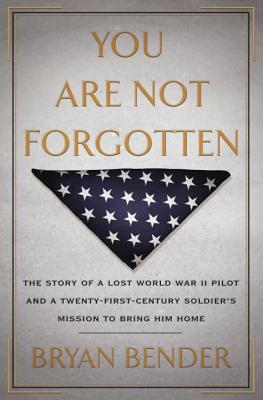

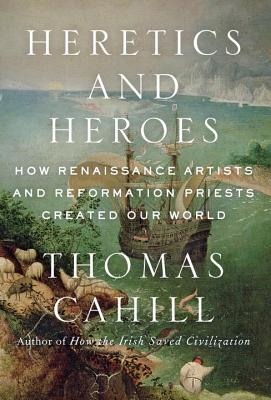

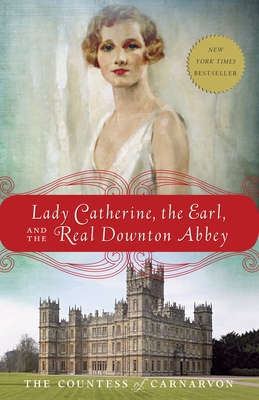

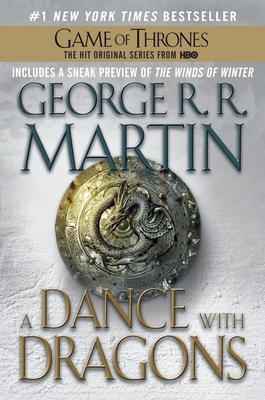
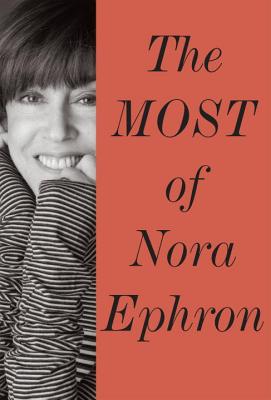

No comments:
Post a Comment